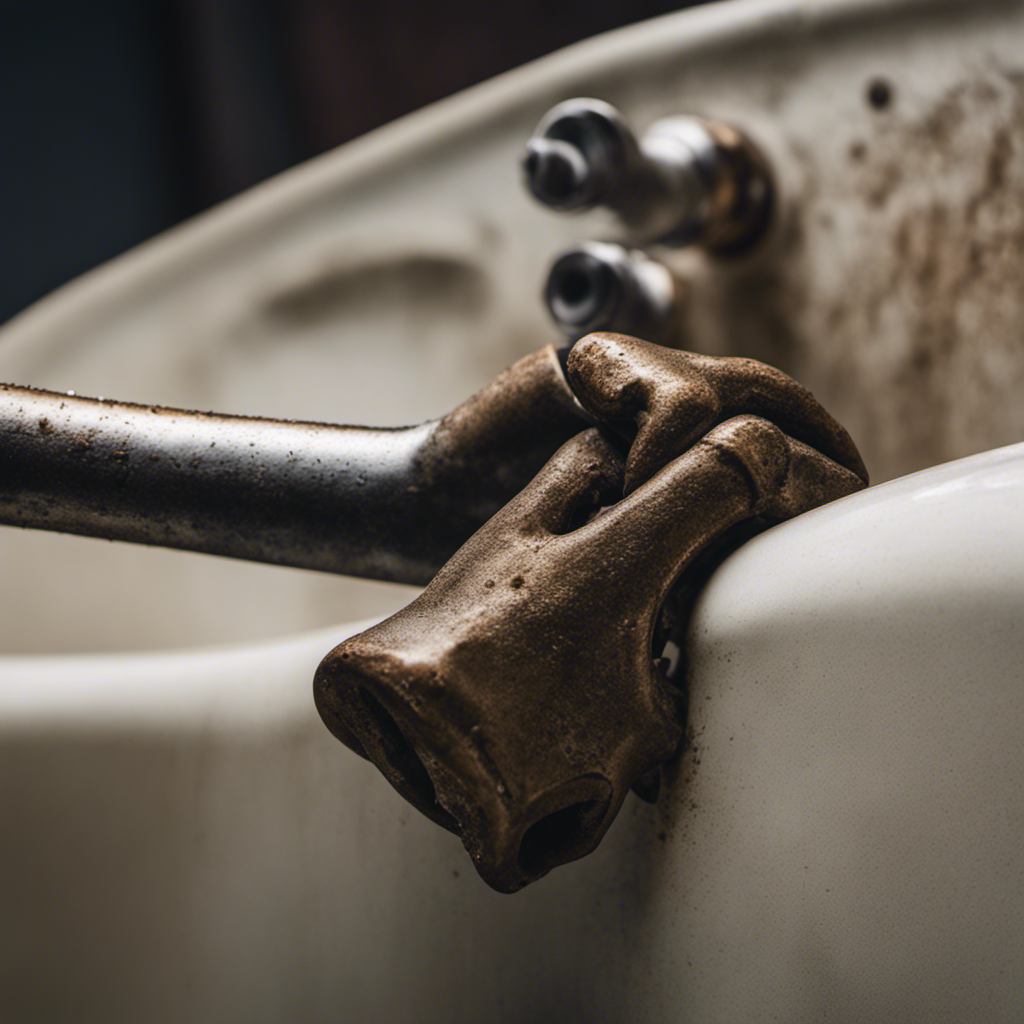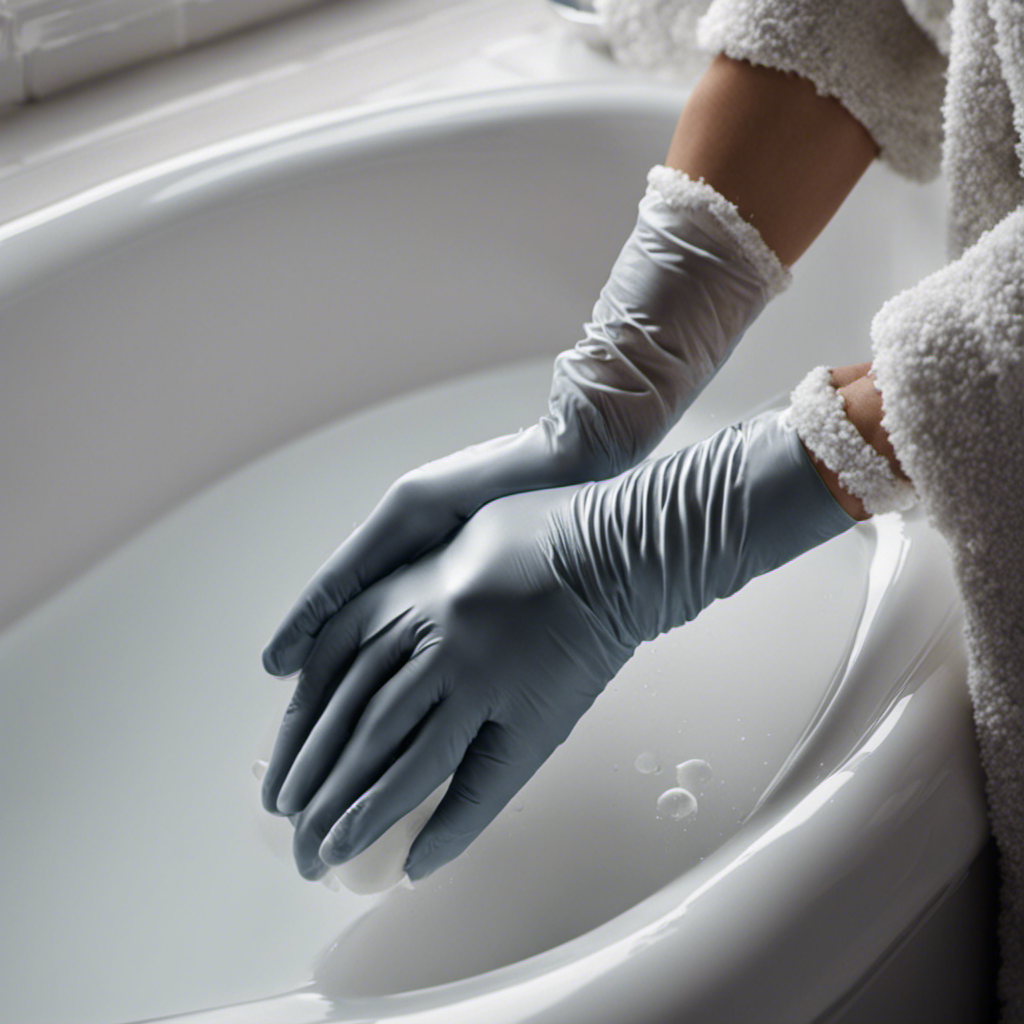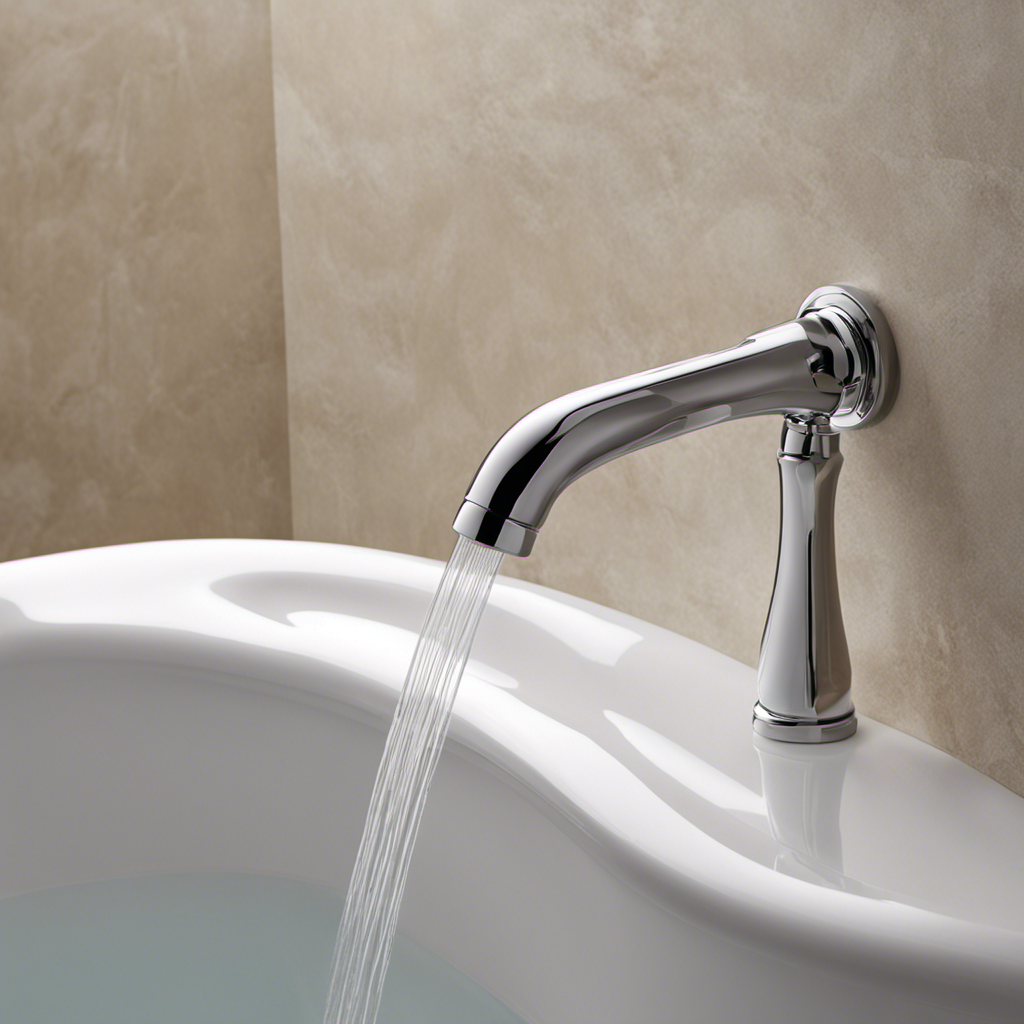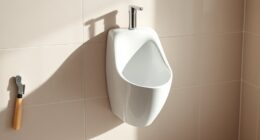Imagine standing in your bathroom, frustrated with a bathtub drain that just won’t budge. Well, fret no more, because I’m here to help you tackle this stubborn problem head-on.
In this guide, I’ll walk you through the steps to remove a stuck bathtub drain with ease. With the right tools and a little know-how, you’ll have your drain flowing smoothly in no time.
So, let’s roll up our sleeves and get ready to say goodbye to that pesky clog!
Key Takeaways
- Check for hair or debris obstructing the drain and inspect the drain opening with a flashlight.
- Seek professional help if the problem is deeper within the pipes to avoid causing further damage.
- Use pliers, a screwdriver, and a bucket as necessary and turn off the water supply for safety.
- Gently wiggle the drain cover with pliers, apply a rust dissolver or lubricant, tap the sides of the drain cover, or heat it with a hairdryer to loosen it.
Assessing the Problem
Before you can begin removing a stuck bathtub drain, you’ll need to assess the problem. Identifying the cause of the clog is crucial in determining the best course of action.
Start by checking if there is any hair or debris obstructing the drain. Use a flashlight to inspect the drain opening and see if there are any visible signs of buildup.
If you can’t spot the problem, it might be deeper within the pipes. In such cases, seeking professional help is recommended. Plumbers have the necessary tools and expertise to diagnose and fix complex drain issues.
Attempting to remove a stuck drain without proper knowledge or tools can cause further damage and make the problem worse. So, when in doubt, it’s always wise to consult a professional.
Gathering the Necessary Tools
To gather the necessary tools for this task, you’ll need a pair of pliers, a screwdriver, and a bucket.
Before we begin, it’s important to take some plumbing safety precautions. Make sure to turn off the water supply to the bathtub and put on gloves to protect your hands.
Now, let’s talk about the common causes of stuck bathtub drains. One common cause is a buildup of hair and soap scum, which can accumulate over time and create a blockage. Another cause could be a worn-out or corroded drain cover that is difficult to remove.
Now that we understand the common causes, let’s move on to the next step: loosening the drain cover.
Loosening the Drain Cover
First, you’ll want to grab your pliers and gently wiggle the drain cover back and forth to loosen it. This will help break any rust or debris that may be causing it to stick. Once you’ve loosened the cover, you can proceed with removing it completely.
Here are some methods for removing rust and using lubricants for easy removal:
- Apply a rust dissolver: Using a rust dissolver can help break down the rust and make it easier to remove the drain cover.
- Use a lubricant: Spraying a lubricant such as WD-40 or silicone spray around the edges of the drain cover can help loosen it.
- Tap with a hammer: Lightly tapping the sides of the drain cover with a hammer can help dislodge it if it’s stuck.
- Heat it up: Using a hairdryer or heat gun to warm up the drain cover can expand the metal and make it easier to remove.
- Use a drain key: If all else fails, you can try using a drain key specifically designed for removing stubborn drain covers.
Remember to always exercise caution when working with tools and chemicals, and if you’re unsure or uncomfortable with the process, it’s best to consult a professional plumber.
Removing the Stuck Bathtub Drain
Using a lubricant like WD-40 or silicone spray can help loosen a bathtub drain that is difficult to remove. However, if you’ve tried this method and the drain is still stuck, it may be time to consider professional alternatives. There could be several common causes of a stuck bathtub drain, such as debris buildup, rust, or a faulty drain mechanism. In these cases, a professional plumber may be needed to safely and effectively remove the drain. They have specialized tools and expertise to tackle even the toughest drains. Additionally, a professional plumber can inspect the drain and identify any underlying issues that may have caused it to become stuck. So, don’t hesitate to contact a professional if you’re unable to remove the stuck bathtub drain on your own.
| Common Causes of a Stuck Bathtub Drain | Professional Alternatives for Removing a Stuck Bathtub Drain |
|---|---|
| Debris buildup | Hire a professional plumber to clean the drain thoroughly |
| Rust | Professional plumber can use rust dissolving solutions |
| Faulty drain mechanism | Call a professional to repair or replace the drain |
Cleaning and Reassembling the Drain Components
Clean the drain components thoroughly before reassembling them. This step is crucial to ensure proper functioning of the bathtub drain. Here are some cleaning techniques and troubleshooting tips to help you:
- Use a drain cleaner solution to remove any buildup or clogs in the drain pipes.
- Scrub the drain components with a brush and a mixture of baking soda and vinegar to remove stubborn grime.
- Rinse the components with hot water to ensure all cleaning agents are thoroughly removed.
Inspect the drain components for any signs of damage or wear. Replace any damaged parts to prevent future issues. Apply a thin layer of plumber’s grease to the threads of the drain components before reassembling them to ensure smooth operation.
Conclusion
In conclusion, removing a stuck bathtub drain can be a challenging task, but it can be done efficiently with the right tools and techniques. By following the steps outlined in this article, you can successfully free your drain from any blockage or obstruction.
Remember to exercise caution and take your time to avoid causing any damage to the drain or surrounding fixtures.
For example, Sarah from Chicago was able to remove a stubborn bathtub drain using a combination of vinegar and baking soda, along with a plunger. She saved herself from calling a plumber and successfully cleared the blockage.










